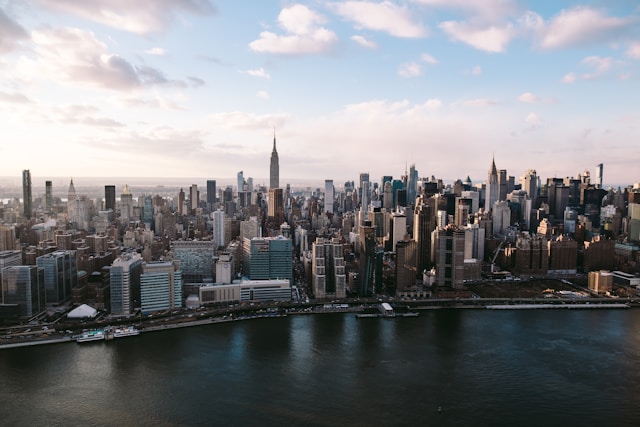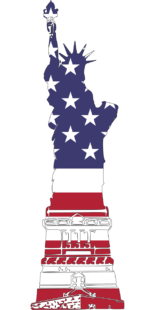The Remarkable Evolution of NYC Police History: From Watchmen to the NYPD

The story of NYC police history is as vibrant and complex as the city itself. From the cobblestone streets of colonial Manhattan to the skyscraper-laden skyline of today, New York’s approach to law enforcement has mirrored its growth, struggles, and spirit. The evolution of policing in New York City isn’t just about crime prevention-it’s about community, reform, and resilience.
This article explores how a small group of night watchmen transformed into the New York City Police Department (NYPD)-the largest municipal police force in the United States-and how each era contributed to shaping public safety in the modern metropolis.
Early Law Enforcement in Colonial New York (1600s–1700s)
The Role of Night Watchmen and Constables
In the 1600s, when New York was still New Amsterdam under Dutch rule, law enforcement was informal. Citizens took turns serving as “watchmen,” patrolling streets after dark. Their duties were basic-calling out the hours, watching for fires, and maintaining order. These early protectors had minimal training and were unpaid volunteers, but they laid the groundwork for organized policing.
As British influence grew, the constable system emerged. Constables were responsible for arresting offenders and delivering them to magistrates, introducing more structure into early law enforcement.
Crime and Justice in the Dutch and British Eras
During this period, crime often revolved around public disorder, theft, and drunkenness. The justice system relied heavily on community participation. Punishments were public and symbolic-whippings, stocks, and pillories served as deterrents. Despite the simplicity of this early system, it reflected the city’s growing awareness of the need for formalized law enforcement.
The Birth of the NYPD (1845): America’s First Modern Police Force
The Push for Police Reform in the 19th Century
By the early 1800s, New York’s population exploded, bringing with it poverty, crime, and chaos. The old night-watch system couldn’t keep up. Citizens demanded reform, inspired by London’s Metropolitan Police, which had set a new standard for professional policing.
In 1845, the New York City Police Department (NYPD) was officially established-the first modern and organized police force in America. The NYPD introduced uniforms, ranks, and patrol routes, marking a revolutionary change in urban law enforcement.
Establishing a Structured Law Enforcement System
The new department aimed to curb rising crime, regulate vice, and maintain public order. Officers began working fixed shifts and received regular pay, transforming policing into a full-time profession. The introduction of police precincts helped manage operations across the rapidly growing city, symbolizing a new era of urban order.
Policing During the Gilded Age (1870–1900)
Corruption, Politics, and the Tweed Era
The late 19th century was a time of both progress and corruption. The infamous Tammany Hall political machine used the police to enforce loyalty and suppress opposition. Officers often accepted bribes, particularly from saloon owners and gamblers. Public trust eroded, sparking widespread outrage.
The Lexow Committee and Police Accountability
In the 1890s, reformers struck back. The Lexow Committee exposed widespread corruption, leading to landmark reforms in recruitment, discipline, and training. This investigation laid the foundation for modern internal affairs divisions and began a long journey toward accountability within the NYPD.
Progressive Era Reforms (1900–1930)
Theodore Roosevelt’s Police Commissioner Years
Before becoming U.S. President, Theodore Roosevelt served as New York’s Police Commissioner from 1895 to 1897. His tenure emphasized honesty, physical fitness, and merit-based promotions. Roosevelt championed the idea that the police should serve-not exploit-the public, bringing a sense of professionalism to the department.
The Emergence of Women and Minority Officers
By the early 1900s, the NYPD began to diversify. Women joined the ranks as matrons and detectives, focusing on cases involving women and children. Although still limited in number, their inclusion marked a significant cultural shift within the force.
NYC Policing During Prohibition and the Great Depression
The Fight Against Organized Crime
The Prohibition Era (1920–1933) challenged the NYPD like never before. With alcohol outlawed, speakeasies and bootlegging rings flourished across New York City. Gangsters like Arnold Rothstein and Dutch Schultz capitalized on the black market, leading to turf wars and a spike in violent crime.
Despite the NYPD’s best efforts, corruption seeped into the department as officers accepted bribes to ignore illegal liquor operations. However, this era also sparked the department’s first major crackdowns on organized crime, laying the groundwork for future task forces.
Technological Advances in Policing
The early 20th century also saw the NYPD embrace new technologies. Two-way radios, fingerprinting, and the introduction of motorized patrols revolutionized law enforcement. The department’s modernization allowed for faster response times and improved communication, critical in a city as vast and diverse as New York.
The Post-War Years (1940–1960): Community and Control
Growth of Police Unions and Labor Rights
After World War II, New York underwent massive social and economic changes. The NYPD grew in size and influence, but so did the demands of its officers. The creation of police unions, such as the Patrolmen’s Benevolent Association, led to improved working conditions and collective bargaining rights.
While these unions helped officers gain better pay and benefits, they also complicated reform efforts, especially when misconduct investigations threatened their members.
Changing Neighborhood Dynamics and Policing Challenges
As demographics shifted, the NYPD faced new challenges in adapting to changing communities. The rise of suburbanization, racial segregation, and economic inequality altered crime patterns. These pressures required new strategies to maintain trust and public order in a rapidly transforming metropolis.
Civil Rights Era and Urban Tensions (1960–1980)
Police Reform Movements and Civil Unrest
The Civil Rights Era exposed deep racial tensions between the NYPD and minority communities. Incidents of police brutality led to protests in Harlem and Brooklyn, demanding greater accountability. The establishment of civilian complaint review boards in the 1960s represented an early step toward oversight, though opposition within the department was fierce.
The 1970s saw economic decline and rising crime, with New York’s reputation suffering as the “fear city” image spread. Yet, amidst these struggles, reform-minded leaders began pushing for transparency and better training.
The Birth of Modern Policing Practices
During this period, the NYPD began experimenting with data-driven approaches to crime prevention. Efforts to centralize crime reporting and analyze statistics laid the foundation for future systems like CompStat, which would revolutionize policing in the 1990s.
The Crack Epidemic and “Broken Windows” Policing (1980–2000)
Crime Waves and the Rise of Zero Tolerance Policies
In the 1980s and early 1990s, New York City faced soaring crime rates, fueled by the crack cocaine epidemic. Entire neighborhoods struggled under the weight of addiction, violence, and poverty. In response, the NYPD under Commissioners William Bratton and Ray Kelly implemented the “Broken Windows” theory-cracking down on minor offenses to prevent larger crimes.
While the strategy helped reduce crime dramatically, critics argued it disproportionately targeted minority communities and led to mass arrests for low-level offenses.
The Controversy Over Stop-and-Frisk
The stop-and-frisk policy, intended as a proactive crime-fighting tool, became one of the most divisive practices in NYPD history. Though defenders claimed it deterred violence, civil rights activists accused the department of racial profiling. This controversy reshaped the public dialogue on fairness, safety, and civil liberties in policing.
Post-9/11 Policing and Counterterrorism in NYC
The NYPD’s Role in Homeland Security
The terrorist attacks of September 11, 2001, transformed the NYPD’s mission overnight. The department expanded to include counterterrorism and intelligence divisions, coordinating closely with federal agencies. New York became the most heavily protected urban center in the U.S., with thousands of officers dedicated to preventing future attacks.
Under Commissioner Ray Kelly, the NYPD developed one of the most sophisticated local counterterrorism units in the world, using surveillance, data analysis, and community outreach to safeguard the city.
Balancing Safety and Civil Liberties
However, these efforts raised questions about privacy and government oversight. Muslim communities, in particular, voiced concerns over surveillance programs. This period marked the NYPD’s delicate balancing act-protecting citizens while respecting constitutional freedoms.
Modern Reforms and Community Policing (2010–Present)
Police Accountability, Body Cameras, and Transparency
The 2010s brought renewed focus on police accountability nationwide. In New York, reforms included the rollout of body-worn cameras, greater data transparency, and de-escalation training.
Public demand for reform grew after several high-profile incidents, including the death of Eric Garner in 2014, which intensified calls for systemic change. The NYPD responded by emphasizing community partnerships, retraining programs, and the creation of neighborhood coordination officers (NCOs).
The Impact of Social Movements on the NYPD
The rise of the Black Lives Matter movement brought national attention to racial justice and police reform. The NYPD, like many major departments, faced the challenge of rebuilding public trust while maintaining safety. Despite the challenges, community-based initiatives and improved communication channels have begun bridging divides.
Notable Commissioners Who Shaped the NYPD
From Teddy Roosevelt to William Bratton
Over its long history, the NYPD has been guided by many transformative leaders. Theodore Roosevelt introduced merit-based reforms, Patrick Murphy professionalized training, and William Bratton pioneered CompStat, turning data into a weapon against crime. Each left a lasting imprint on the department’s evolution.
Leadership Lessons and Policy Shifts
Strong leadership has consistently driven innovation within the NYPD. Whether through anti-corruption crusades, technology integration, or diversity initiatives, these commissioners have helped define modern policing’s ethical and strategic standards.
The NYPD Museum and Preservation of Police Heritage
Historic Artifacts and Public Education Efforts
The New York City Police Museum, though currently undergoing renovations, remains a vital institution preserving the NYPD’s rich history. Exhibits feature vintage uniforms, badges, and records that trace the department’s evolution from the 1800s to today. Educational programs foster understanding of the department’s legacy and its role in shaping civic life.
The Future of Policing in New York City
Technology, AI, and Predictive Policing
The NYPD continues to push forward with innovations such as AI-driven analytics, drones, and real-time crime centers. These tools help predict and prevent criminal activity but also raise new ethical questions about privacy and bias in data-driven systems.
Building Trust Through Community Engagement
Looking ahead, the NYPD’s success depends on public collaboration. Initiatives focusing on youth outreach, mental health response teams, and restorative justice are reshaping how the department interacts with communities. The future of NYC policing lies in empathy, transparency, and partnership.
FAQs About NYC Police History
1. When was the NYPD officially established?
The New York City Police Department was founded in 1845, making it the first modern municipal police force in the United States.
2. Who was the first Police Commissioner of NYC?
The NYPD’s first official commissioner was George W. Matsell, who served during the department’s formative years.
3. What was the Lexow Committee?
The Lexow Committee, formed in 1894, investigated police corruption linked to Tammany Hall, leading to sweeping reforms in the NYPD.
4. How did 9/11 change NYC policing?
After the 9/11 attacks, the NYPD became a central player in homeland security, establishing dedicated counterterrorism and intelligence units.
5. What are some major controversies in NYPD history?
Major controversies include corruption in the 19th century, stop-and-frisk policies, and civil rights protests related to police misconduct.
6. What does the future hold for the NYPD?
The NYPD is embracing technology, transparency, and community-based policing to rebuild trust and ensure equitable law enforcement for all New Yorkers.
Lessons from the Legacy of NYC Policing
The history of NYC policing mirrors the city’s own story-a journey from chaos to order, from corruption to reform, and from distrust to partnership. The NYPD’s past offers both cautionary tales and inspiring examples of resilience and reinvention.
As New York continues to evolve, so too must its police force-balancing safety, justice, and community trust. Understanding this long and complex history reminds us that progress, though slow, is always possible when accountability meets courage.
